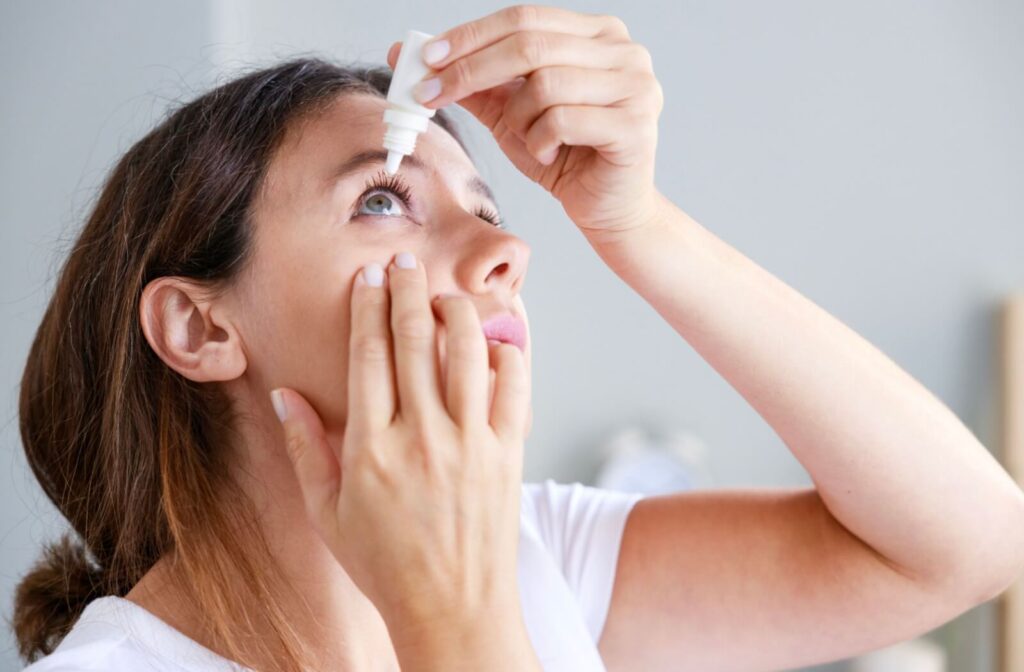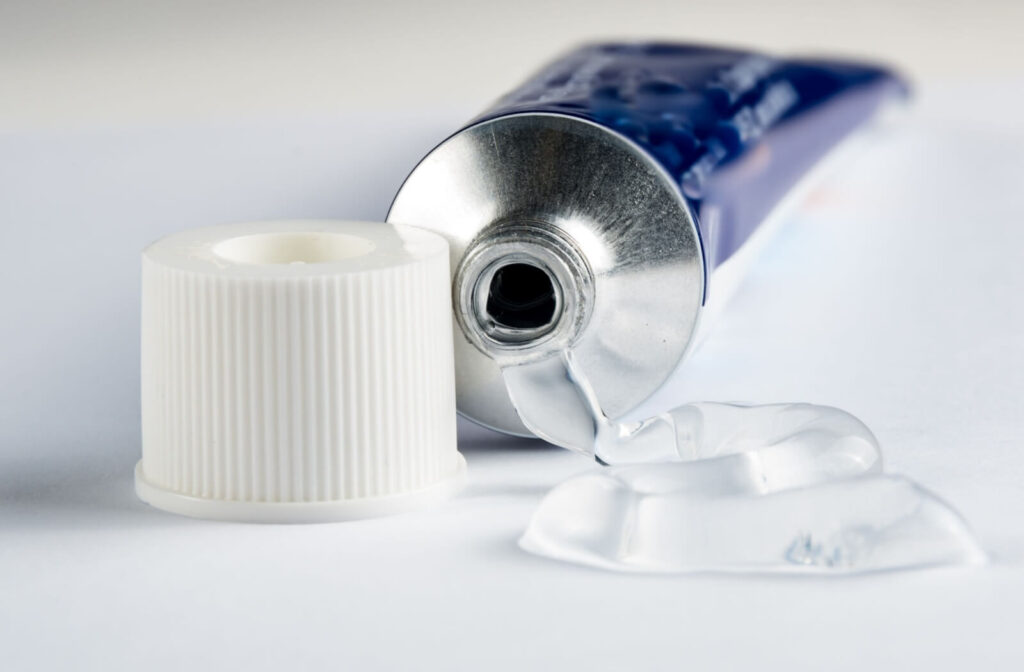Taking care of your eyes shouldn’t feel like a mystery, but with so many options available, choosing between eye drops, gels, and ointments can feel overwhelming. Whether you’re dealing with tired eyes from long screen time, dry eyes, or something more serious like an infection, understanding how these options differ can make all the difference in finding the relief you need.
Simply put, eye drops, gels, and ointments differ in texture, application, and duration. By talking to your optometrist, you can learn everything you need to know to make the right choice for your eyes.
Eye Drops
Eye drops are the go-to option for relieving the symptoms of common eye problems, from dry eye and redness to itchiness. They’re quick, convenient, and typically the first option people reach for.
Eye drops can help with:
- Dryness
- Redness
- Itching
- Soreness
- Swelling
- Discharge
Non-Prescription vs. Prescription Eye Drops
Not all eye drops are created for the same purpose. They come in 2 broad categories:
- Non-prescription drops are suitable for treating mild to moderate symptoms and are often the more affordable option.
- Prescription drops are typically recommended by an eye doctor to treat specific or more complex conditions.
Non-prescription eye drops can be further divided into 2 categories:
- Eye drops with preservatives: These come in multi-dose bottles and contain preservatives to prevent bacterial growth. However, preservatives can sometimes irritate sensitive or severely dry eyes, so they’re better for occasional use.
- Preservative-free eye drops: These drops are ideal for moderate to severe dry eyes or for people using eye drops more than 4 times a day. They’re gentler on the eyes, and their preservative-free formula makes them perfect for long-term use.
That can seem like a lot! Understanding these differences can help you make informed choices for your eye health.
Eye Drops For Dryness
When your eyes feel like sandpaper after hours at a computer or exposure to wind, lubricating eye drops (artificial tears) are a fast option. Non-prescription lubricating drops mimic the natural elements in your tears, helping to give you that soothing relief without causing irritation.
Eye Drops For Eye Infections
Pink eye (Conjunctivitis) is a common type of eye infection, and different types of eye drops may be needed depending on the cause:
- Viral conjunctivitis: Can often heal on its own, but lubricating drops may ease discomfort. Severe cases may need prescription drops.
- Bacterial conjunctivitis: This causes sticky, thick discharge and requires prescription antibiotic eye drops.
- Allergic conjunctivitis: Redness, swelling, and itchy, watery eyes caused by allergens can be alleviated with lubricating and antihistamine eye drops.

Eye Ointments
Eye ointments, on the other hand, may offer longer-lasting relief because of their thicker consistency. They are especially effective for overnight use, as they don’t evaporate like eye drops.
Eye ointments can treat severe dryness, pain, or infections that require continuous moisture or medication. They tend to stay in place longer, helping your eyes remain protected and soothed.
Eye Ointments for Dry Eyes
When dryness strikes at night, eye ointments can be your best friend. Applying a small amount before bed can help protect your eyes and keep them hydrated while you sleep. All these ointments are designed to create a protective layer to keep your eyes moist until morning.
For infections or other conditions, they offer a heavyweight answer to your discomfort.
Eye Ointments vs Eye Drops vs Gel
Eye gels often fall in the middle ground between drops and ointments. They’re thicker than eye drops but not as rich as ointments, offering hydration that lasts longer than drops but isn’t as thick as ointments. This means when you’re choosing between ointments, drops, and gels, there can be a lot to consider.
Popular options include:
Muro 128 Ointment vs. Eye Drops
Muro 128 ointment is often used for conditions like corneal edema, thanks to its thick, long-lasting formula. Eye drops, while good in the short term, may need frequent reapplication for the same condition.
Pink Eye Ointment vs. Eye Drops
For bacterial pink eye, ointments like erythromycin can provide ongoing relief and treatment overnight, while drops are more suitable for use throughout the day.
Systane Nighttime Ointment vs. Gel
Systane Nighttime Ointment offers intense moisturization, perfect for severe dryness during sleep. The gel version provides a lighter consistency, making it a good option for daytime use.
Lubricant Eye Gel vs. Drops
Lubricant gels are ideal for those needing more than basic hydration, lasting longer than drops yet still lightweight. Drops work well for quick fixes in the middle of the day.
Systane Nighttime Gel vs. Ointment
The Systane Nighttime Gel is great if you prefer a less intense, non-greasy option for nighttime relief, while the ointment provides maximum hydration for the driest of eyes.
Erythromycin Ointment vs. Eye Drops
When treating an infection, erythromycin ointment is often prescribed for areas where longer, consistent medication delivery is needed. Eye drops are easier for daytime use if you need frequent applications.
Clear Vision Ahead!
When it comes to choosing between eye drops, gels, and ointments, the choice depends on your specific symptoms and lifestyle. If your eyes are feeling dry during long days at work, eye drops might be all you need. For an intense overnight option, ointments have got your back (or eyes). And gels? A nice in-between for lasting hydration and care.
Your eye health is vital, and finding the right product shouldn’t require guesswork. If you’re still unsure about what option you need for your eyes, booking an appointment with Queensway Optometric Centre is the next step. Our clinic is here to guide you, helping you see the world more clearly and comfortably. Book your appointment today!


